
The Blastobasidae are a family of moths in the superfamily Gelechioidea. Its species can be found almost anywhere in the world, though in some places they are not native but introduced by humans. In some arrangements, these moths are included in the case-bearer family (Coleophoridae) as subfamily Blastobasinae. The Symmocidae are sometimes included in the Blastobasidae as subfamily or tribe.
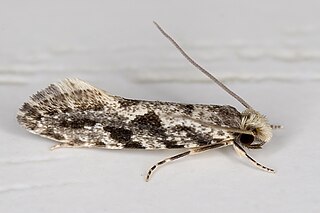
Nemapogon granella is a species of tineoid moth. It belongs to the fungus moth family (Tineidae), and therein to the subfamily Nemapogoninae. It is the type species of its genus Nemapogon, and via that also of the subfamily Nemapogoninae. It is also the type species of the proposed genera Brosis and Diaphthirusa, which are consequently junior objective synonyms of Nemapogon.

Scrobipalpa aptatella is a moth of the family Gelechiidae. It is found in China (Xinjiang), Australia, New Zealand, Samoa, India, Indonesia (Sumatra), Malaysia, Myanmar, Sri Lanka, Palestine and in Africa, where it has been recorded from the Democratic Republic of Congo, Kenya, Malawi, Namibia, South Africa, Tanzania and Zimbabwe.
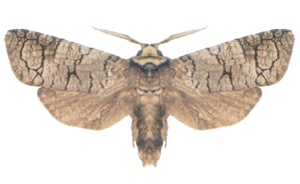
Zyganisus caliginosus, the Australian goat moth, is a moth of the family Cossidae. It is found in Tasmania, Victoria and New South Wales.
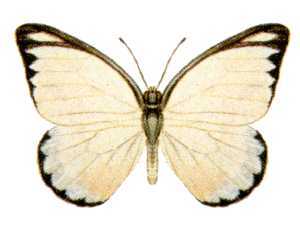
Appias ada, the rare albatross, is a butterfly of the family Pieridae. It is found on the Moluccas, New Guinea, Indonesia and in Australia and the Solomon Islands.

The geranium plume moth is a moth of the family Pterophoridae. It is found in western Africa, Madagascar, India, Sri Lanka, Thailand, Japan, the New Hebrides and Central and South America, as well as Australia, where it has been recorded from Cape York to central New South Wales. It is also present in the United States, where it has been recorded from Florida, as well as Mississippi.

Pterophorus albidus is a moth of the family Pterophoridae. It is distributed in Africa, south and south-east Asia, including New Guinea and Australia, as well as Japan (Kyushu) and the Ryukyu Islands.

Batrachedra arenosella, the coconut moth, is a species of moth of the family Batrachedridae found in India, Indonesia, Malaya, and Réunion, as well as New Zealand and Australia, from the Northern Territory and northern Queensland to New South Wales and South Australia. B. arenosella was first described by Francis Walker in 1864.
Amyna natalis, the ilima moth, is a moth of the family Noctuidae. It was first described by Francis Walker in 1858. It is widespread from tropical Asia into northern Australia. It is an introduced species in Hawaii, where it is found on Oahu.
Dichomeris acuminata, the alfalfa leaf tier, is a moth of the family Gelechiidae. It was first described by Otto Staudinger in 1876. It is a widely distributed species, being known from India, Myanmar, and Sri Lanka southwest to the Seychelles, Mauritius and Réunion and on to Egypt, east and South Africa and southern Europe. Eastward from India it extends through Indonesia and Malaysia to Taiwan and Australia. It is also found in Japan, the West Indies, North America and Hawaii.
Mythimna scottii is a moth of the family Noctuidae. It has been recorded from Australia, Fiji, New Caledonia and Hawaii. But it has been listed as a Species inquirenda and might prove to be a synonym.

Eublemma cochylioides, the pink-barred eublemma, is a species of moth of the family Erebidae described by Achille Guenée in 1852.
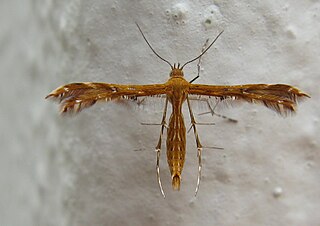
Stenodacma wahlbergi is a moth of the family Pterophoridae described by Philipp Christoph Zeller in 1851. It is known from Japan, China, Saudi Arabia, Iran, Sri Lanka, India, Central, East and South Africa, St. Helena, Mauritius, the Seychelles and Rodriguez Island. It has recently been recorded from Vietnam. Records for Australia were based on synonymisation with Stenodacma pyrrhodes.

Candalides xanthospilos, the yellow-spot blue, is a species of butterfly of the family Lycaenidae. It is found in along the eastern coast of Australia, including Queensland, New South Wales and Victoria.

Candalides cyprotus, the cyprotus blue or copper pencil-blue, is a species of butterfly of the family Lycaenidae. It is found along the east coast of Australia, including South Australia, New South Wales, Western Australia and Victoria.
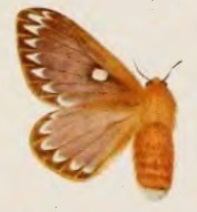
Cotana serranotata is a moth of the Eupterotidae family. It is found in Australia, where it has been recorded from Queensland.
Deltophora peltosema is a moth of the family Gelechiidae. It is found in India, Sri Lanka and Australia. Records from South Africa and South America are based on misidentifications.
Archernis argocephala is a moth in the family Crambidae. It was described by Lower in 1903. It is found in Australia, where it has been recorded Queensland.
Metasia homogama is a moth in the Crambidae family. It was described by Meyrick in 1887. It is found in Australia, where it has been recorded from Western Australia.
Erechthias beeblebroxi is a moth of the family Tineidae. It is endemic to Australia, where it has been recorded from Queensland.
















